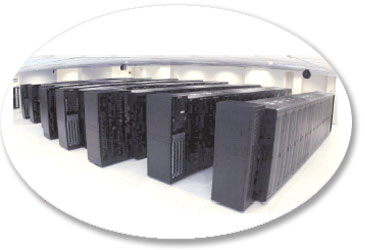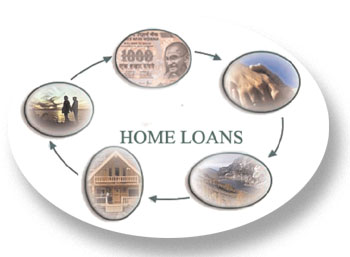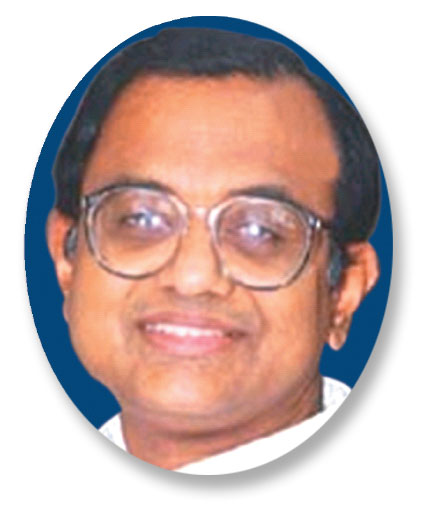| |
A motley collection of business and economic news
NRI builds
2nd
Fastest Computer

|
|
A computer built by an
Indian-American company has been rated the second fastest
supercomputer in the world, second only to the Earth Simulator
in Yokohama, built by NEC. Lawrence Livermore National
Laboratory’s "Thunder," built by the California-based
California Digital Corporation, has been named the second-fastest
supercomputer in the world by the Top 500 Project, which
provides twice-yearly lists of the 500 most powerful computer
systems in the world."This is something that will change
the face of high -
performance computing as we know it,"an ecstatic
B.J. Arun, founder and |
CEO of California Digital, said.
For years, supercomputers have been a high-tech, exclusive domain
for big players with deep pockets. The lowest estimate of Japan's
Earth Simulator is $350million. "Our machine
costs only $20 million," said Arun, whose company employs just 100 people worldwide. Ravi Chhabria, the firm’s vice president for marketing and strategy, said the company’s staff
in Bangalore pitched in too. "We’ve done it primarily by leveraging a lot of our engineering in
the US primarily in India," he said.
So how fast is Thunder? The unit for measuring supercomputing speed is a teraflop-trillion floating point
operations per second. The Thunder cluster delivers 19.94 teraflops of sustained performance. The Earth Simulator in Japan, on the other hand,
is capable of 35.86 teraflops.
Made in
 ..... Made for India ..... Made for India
|
The Indian market does lap up a foreign tag but it does so only with some level of customization. The realization
that Indians are different from the Americans and the Europeans made the multinationals rework their
marketing strategy. From introducing their products in a hurry without bothering to gauge whether the
Indian consumers liked them or not, they had to graduate to develop products specially made for the
Indians. The success of any product now lies in customizing it for the Indian market and working closely
with manufacturing facilities and research centers in India. Now,Reliance CDMA phones come |
|

|
with the
Indian flavor unique polyphonic rings and color displays; the
Samsung stables have the Metallica and Woofer series of TVs
revolving around the song and dance
routine of Hindi film industry; and Electrolux Kelvinator with their Hindi-speaking washing machine catering to the Indian housewife.
These localized products are targeting the Indian consumers not as a single entity but also focusing on
the distinctly different preferences of the urban, small town and rural Indians.
Home
Loans Gather
Critical Mass

|
|
Today, India’s consumer banks and property developers in urban and suburban India are busy selling and financing dreams, through home loan
fairs, commonly know as Melas, routinely held in every major Indian city.
Such melas are targeting the fastest growing middle class in the world around
400 million plus - who are now opting to buy apartments rather
than pay rent. Unlike a cautious outlook on loans a few years
ago, today’s consumer has a far more positive and open outlook
about taking a loan. With escalating
rentals, steep reduction in cost of loans, |
changing
mindsets, increasing incomes, and an increasingly professional
builder community, the housing loan scenario is
changing forever. In 2003, State Bank’s home loan book was about $2.7 billion, with a net growth in loan disbursements of 48.2
per cent. In the same year, ICICI Bank had a home loan book of US$ 2.2 billion. The country’s largest housing
finance bank, HDFC Bank disbursed loans worth US$ 2.8 billion between April 2003 and March 2004 and has a
loan portfolio of more than US$ 12 billion.
ICICI Bank’s internal research shows that the home mortgages market is now estimated at US$ 10.7 billion, and as
many as one million homes are financed every year.
Growths tops
8%
after 15 years
|
may be forgiven a wry smile or two. His successor, P Chidambaram,
gets to bask in the glory of piloting the
world’s second-fastest growing economy, which clocked a scorching
8.2 percent growth in the year ended
March 31, 2004.
That was marginally better than the 8.1 percent forecast by CSO
in February, more than double the
meager 4 percent growth posted in drought-hit 2002-03, and the
best performance by the economy in the
past 15 years.
Only China, with 9.8 percent growth, fared better in the last
fiscal. In fact, India had actually touched
10.4 percent in the third quarter of 2003-04.
The size of Asia’s third largest economy expanded to $600 billion
(Rs 27,72,194 crore ) from $550 billion,
while the per |
|

|
capita income for India’s 1.073 billion
people rose to Rs 20,862 ($433). Chidambaram now has his task cut out. Can he ensure that the economy grows at the same pace on his beat?
Agriculture is unlikely to repeat the spectacular growth witnessed in 2003-04. Even so, analysts believe that India
should be able to manage at least 7% in 2004-05, especially now that the Met office has confirmed that this year’s
monsoon will be normal.
India's
upwardly
mobiles

|
|
Breaking all records, mobile handsets, both GSM and CDMA, registered a huge 568 per cent growth with turnover
touching Rs 8,344 crore ($1.7 billion) in 2003-04 and LG overtaking Nokia for the number one slot, according
to a survey.
In the overall mobile handsets market, LG cornered a market share of 33.5 per cent, with its sales pegged at
about Rs 2,797 crore against Nokia’s estimated Rs 2481 crore with a 29.7 per cent market share, the survey by
Voice and Data said.
Samsung was at number three during the year with sales estimated at Rs 1074 crore with a
market share of
12.9 per cent followed by Motorola at Rs 633 crore having a market share of 7.6 per cent, the survey said.
In the fixed line segment which has been hard hit by the mobiles, the number of units came down to 6.2 million
in 2003-04 from 6.6 million in 2002-03 with sales dipping to Rs 269 crore from the earlier Rs 270 crore.
Bharti Teletech was the market leader with more than two million phones in the private sector segment. It even
emerged as a leader in the replacement market with almost 40 per cent marketshare. |
Green
Evolution
|
In an effort to boost cooperation in agricultural biotechnology research and development, India and the US have
entered into an agreement. A letter of intent to this effect was signed by minister for science and technology and
ocean development Kapil Sibal and US ambassador David C Mulford on June 29.
Sibal said the main objective was to develop pest resistant agricultural produce and to improve food
production in the country. The critical focus will be on the production of rice and wheat. As per the
agreement, the department of biotechnology (DBT) of the government of India and US Aid will coordinate
between the two countries.
The program will encourage the creation of partnership to bring together Indian and US institutions to
pursue agricultural biotechnology research projects of mutual interest including technology development,
technology diffusion, bio safety and related policy activities.
The programme is also expected to include joint workshops, conferences, scientific exchanges and
training of the scientists. Collaborative activities shall be subject to the laws and regulations of each country and
funding may come from a variety of sources on both sides.
|
|

|
|
|